Campaigns
Your guide to WhatsApp marketing: Benefits, strategies, and inspiring examples
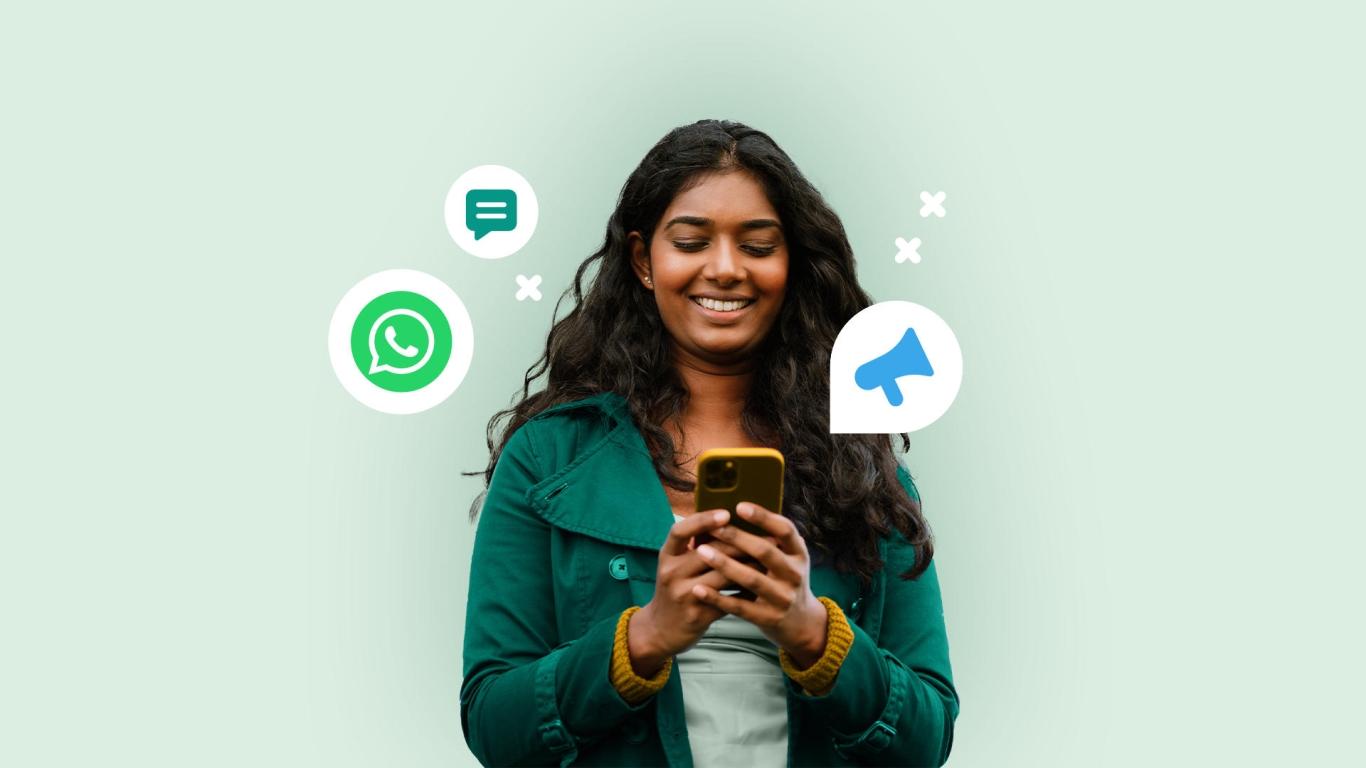
Campaigns

Open rates of 95%, conversions of 90%, and endless possibilities: WhatsApp is a real force when it comes to digital marketing. Learn how to use WhatsApp marketing to turn your chats into customers.
Thinking about implementing WhatsApp into your marketing strategy? Stop thinking, start doing it! Because WhatsApp marketing delivers remarkable results and is one of the most versatile digital marketing tools out there.
When it comes to online marketing, WhatsApp offers businesses some decisive advantages in comparison to other digital channels. And yes, it’s also 100% legal!
WhatsApp messages get users’ full attention. Besides the fact that they end up front and center on a user’s phone, people love to check their WhatsApp, even multiple times a day. Open rates for WhatsApp messages therefore hover around 95%.
Your WhatsApp marketing messages also won’t be lost in an overflowing inbox or be obscured by algorithms. Instead, they’ll be read almost immediately! To put this in numbers: the average click-through rate for social media campaigns is 5%, on e-mail it’s 3%, and on WhatsApp… it’s a whopping 35%!
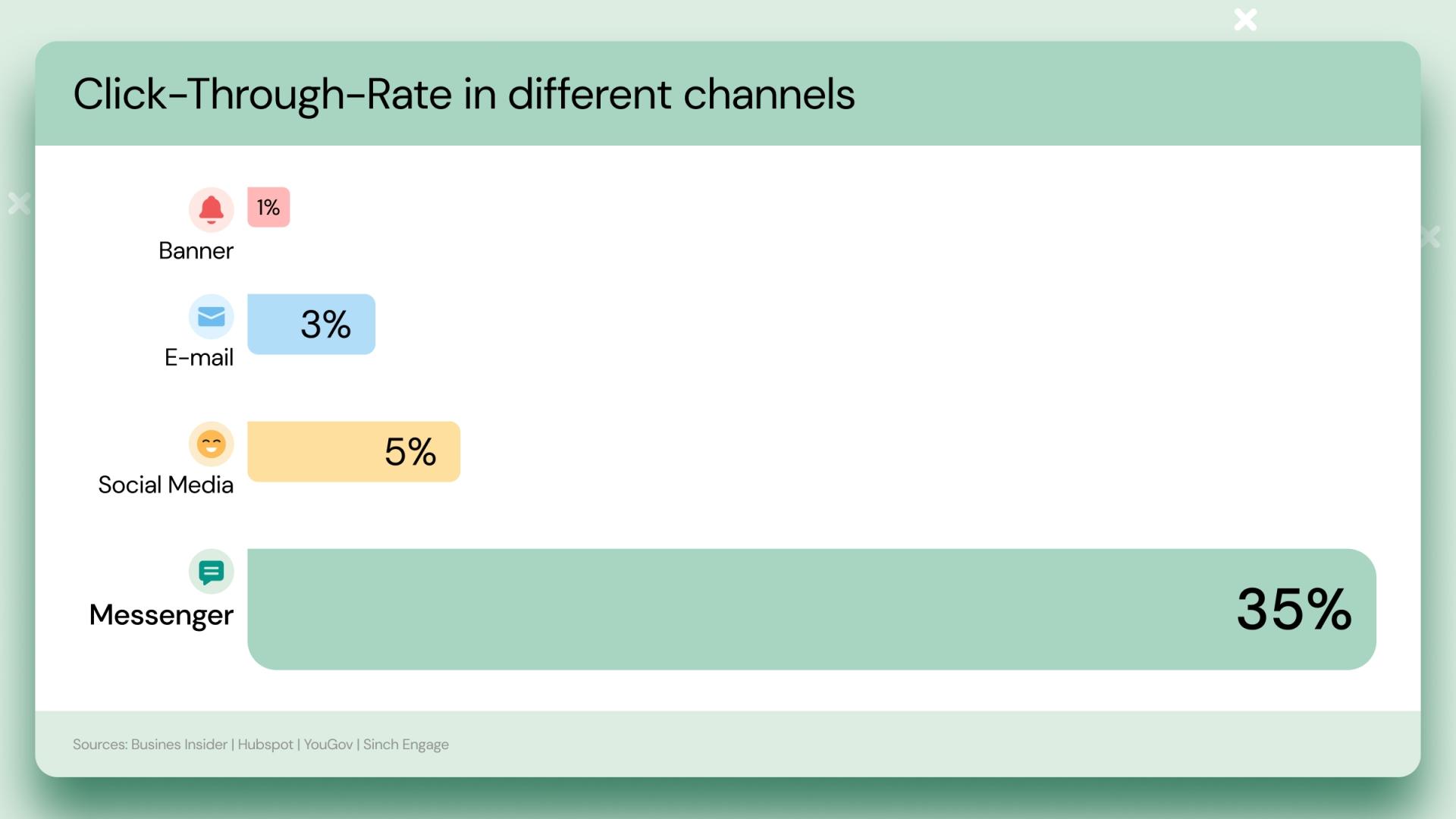
And the benefits of WhatsApp marketing don’t stop there. Companies that engage in a more conversational style of marketing see conversion rates of 90% from a chat to a purchase.
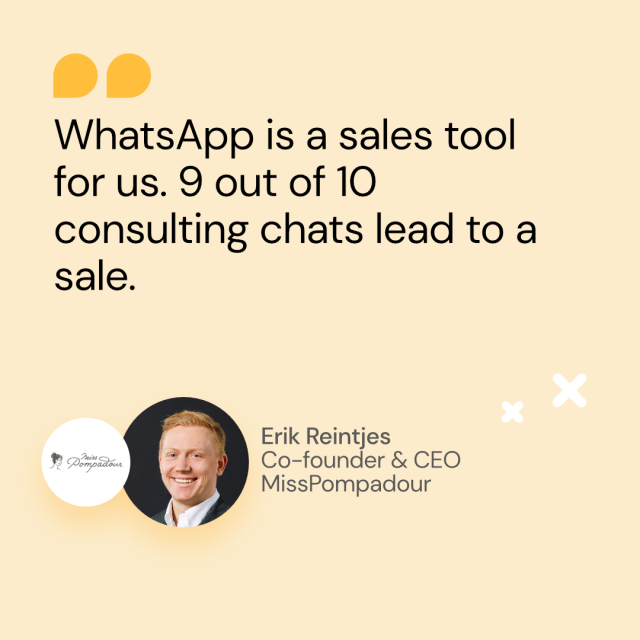
WhatsApp messages from companies also are among WhatsApp messages from friends and family. That’s a really tough circle of trust to get into as a business. Ending up in this environment with your promotional messages will generate trust, but also nurture closer relationships with customers.
Why? Because people use WhatsApp for their private conversations, the way people interact on WhatsApp is more personal and friendlier. You’ll be able to build a close relationship with leads much faster, and nurture these relationships long-term as well, as WhatsApp can reduce the churn rate by 50%!
There are many ways to measure marketing costs: total budget, money on ad spent, customer acquisition cost, customer lifetime value, return on marketing investment, and many more. However, no matter what metrics you look at: WhatsApp marketing consistently delivers better results.
If you calculate that you get more leads, higher engagement, better conversion rates, and less churn, you’ll have a better return on investment with WhatsApp than with other marketing channels.
In addition, you also don’t have to spend a lot of money on re-engagement campaigns. All you have to do is reach out to an existing contact in your WhatsApp chats, which will result in more leads and better conversions for less money.
From broad awareness campaigns to personalized marketing messages to re-engagement efforts, there’s nothing you can’t do with WhatsApp marketing. Even if you’re just getting started with WhatsApp, adding it to your marketing mix should be top of mind.
As WhatsApp boasts a lively and engaged audience, it’s the perfect channel for promoting new products and services. You can do so by:
If you’re looking to grow your audience on WhatsApp, you can also use the messaging app for lead gen campaigns. For instance:
Especially for media companies but also for retailers, WhatsApp broadcasts are a great tool to send regular updates to their audience.
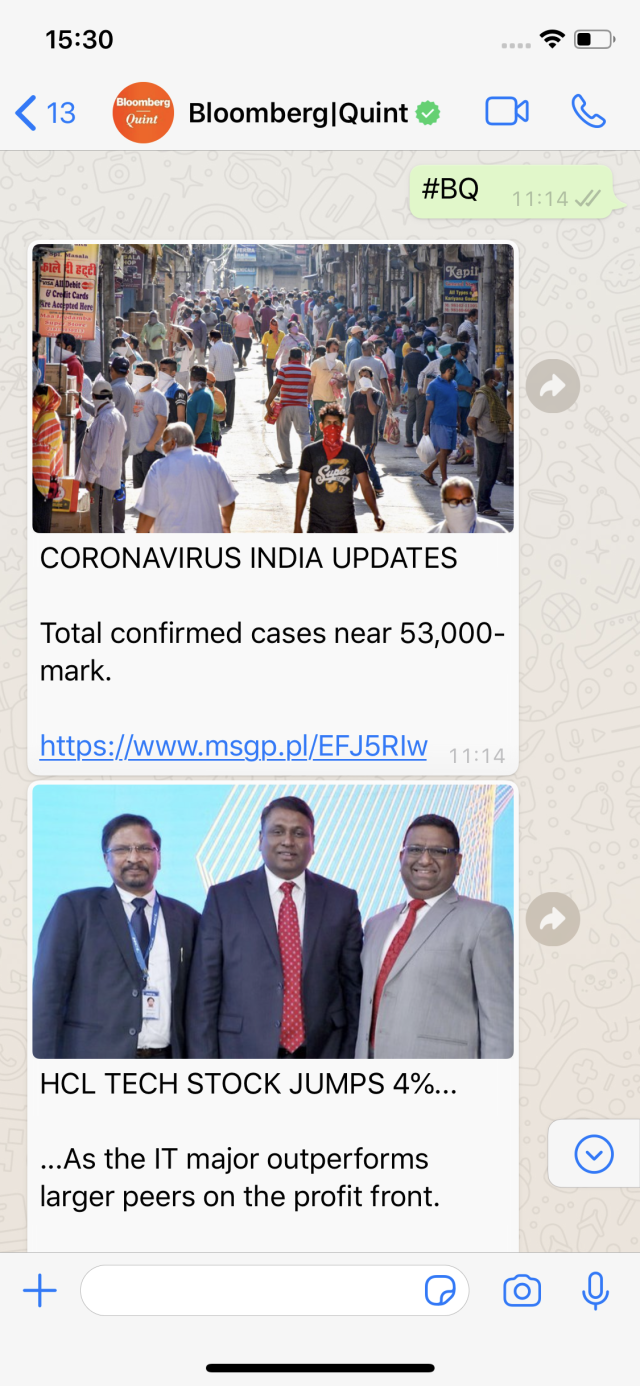
Even if WhatsApp messages should be kept short and sweet, there are still many content marketing and story telling tools you can use. And it’s worth it because you’ll have a highly engaged audience. You can send:
Don’t be afraid to think outside the box! Brands like Stimme or Fools and Geniuses have had great success with innovative WhatsApp content marketing. Fools and Geniuses, for instance, used WhatsApp to tell a crime story in real time, one WhatsApp message at a time. This was a huge hit and created more brand awareness among their younger target audience!
People love deals! Regardless, whether it’s a special discount for the festive season or a Black Friday deal.
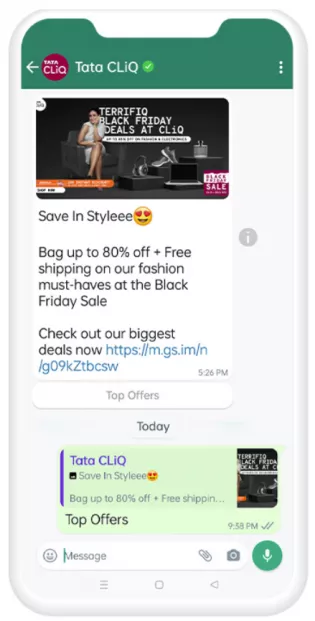
If you connect CRM systems to your WhatsApp account, you can even send highly personalized deals, such as discounts based on previous purchases.
WhatsApp is a great channel for offering consultations, as the conversations are so personable. At the same time, video and voice chat features as well as the fact that users can take their WhatsApp conversations “on the go” make the messaging app both versatile and flexible for one-on-one conversations.
You can use this to your advantage by offering:
In e-commerce, almost 70% of shoppers abandon their carts. An attention-grabbing WhatsApp message can be a helpful reminder to complete the purchase. You can even automate these messages (for instance, have a chatbot send a reminder after a certain time period) to be more efficient.
Marketing goes beyond just getting people to buy something. It’s also about understanding your target audience and their needs. WhatsApp offers many tools that can help you with that, such as polls, or feedback forms.
You can even use a chatbot to ask for users’ opinions.

Once you have established a connection with someone on WhatsApp, all it takes to re-engage with them is a message. Aside from the fact that users won’t feel like your message comes out of the blue (after all, they can see the chat history), you’ll also be able to use personalization and automation tools for better results. Based on a user’s data, you can send very individualized
As you can see, from reaching a broad audience to highly personalized campaigns, WhatsApp marketing offers endless possibilities.
Of course, not every marketing approach works for every company and target group. That’s why it’s important to think about your WhatsApp marketing strategy before even getting started.
Believe it or not, WhatsApp currently offers businesses four different possibilities for WhatsApp marketing: WhatsApp channels, WhatsApp broadcast, WhatsApp marketing messages, and WhatsApp marketing notifications.
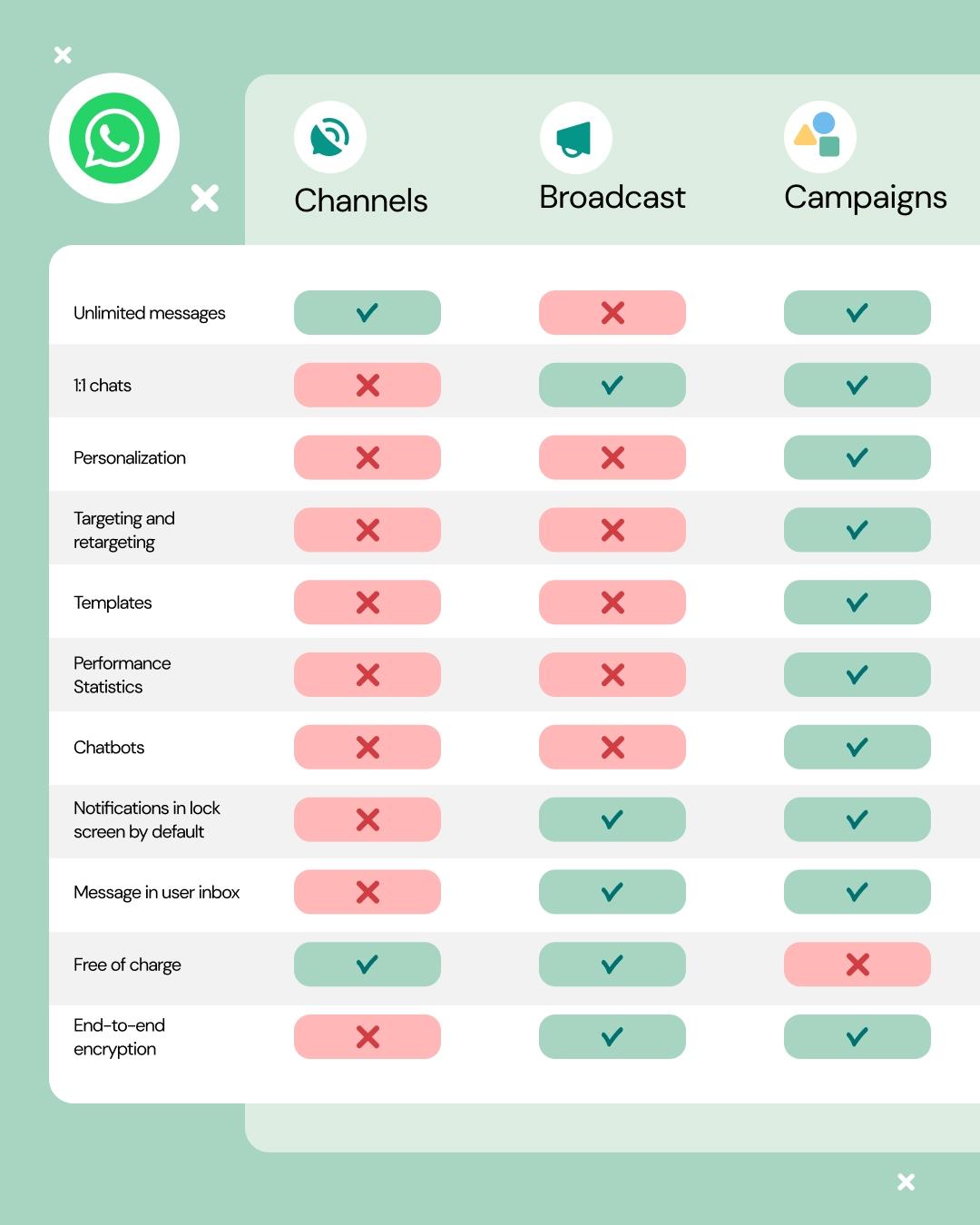
Depending on your target group, business size, and approach, one might be better than the other, or you might even combine different tools.
WhatsApp channels are great for reaching many followers. However, they lack tools for automation, personalization, and analytics, and users can’t respond to your messages. WhatsApp channels are best for growing brand awareness if you have the resources to produce special content for the channels. They’re not ideal if you’re focusing on performance marketing and / or want to also sell through WhatsApp.
WhatsApp broadcasts allow you to send one-to-many messages to your contacts, and engage in one-on-one conversations. However, you can only reach out to people that have your number saved in their contacts, you can’t use automation tools, and you’re limited to a maximum of 256 recipients pro broadcast list. This is a good option for very small businesses that don’t need to track their campaigns.
WhatsApp marketing messages are the new kid on the WhatsApp promotional tools block, and so far only available in a few markets, such as Peru or Indonesia. They’re basically an upgrade of the WhatsApp broadcasts, where you pay for additional features like being able to include a recipient’s first name in the message and automatically setting up target groups. As of now, this option is neither here nor there, because you pay as much as you would for the professional notification tool, but in exchange get only minimal benefits.
WhatsApp marketing notifications is the most complete WhatsApp marketing tool as it allows for personalization, targeting, automation, and tracking. There are potentially no limits as to how many users you can reach, and this is also the best way for WhatsApp marketing if you don’t want to get banned or your number blocked. It’s also the only option for complying with data regulations like the GDPR.
While channels, broadcasts, and marketing messages are available on the WhatsApp Business App, you can only use WhatsApp marketing notifications through the WhatsApp Business API.
WhatsApp requires businesses to gather opt-ins for users before initiating marketing messages. If you’re using the WhatsApp Business API, you can either do this by adding them to your WhatsApp chat widget (for example on your website) or by having a chatbot automatically gather the opt-ins.

By the way, users should also have an easy way to opt-out of your promotional messages. Otherwise, they might mark your messages as spam, which can get your account blocked on WhatsApp.
WhatsApp marketing is only successful if you deliver your users the content they want when they want it. Make sure to ask users up front what type of content they’re interested in, and build target groups before sending out campaigns to make sure your campaigns really fit the users’ needs.
Also consider creating target groups based on language preferences. Marketing campaigns will be more successful if you send them in the users’ preferred regional language.

Make it as easy as possible for new users to start a WhatsApp chat with you. Click-to-WhatsApp links or QR codes are very helpful for that because users just click on them or scan them to immediately end up in a company’s WhatsApp chat.
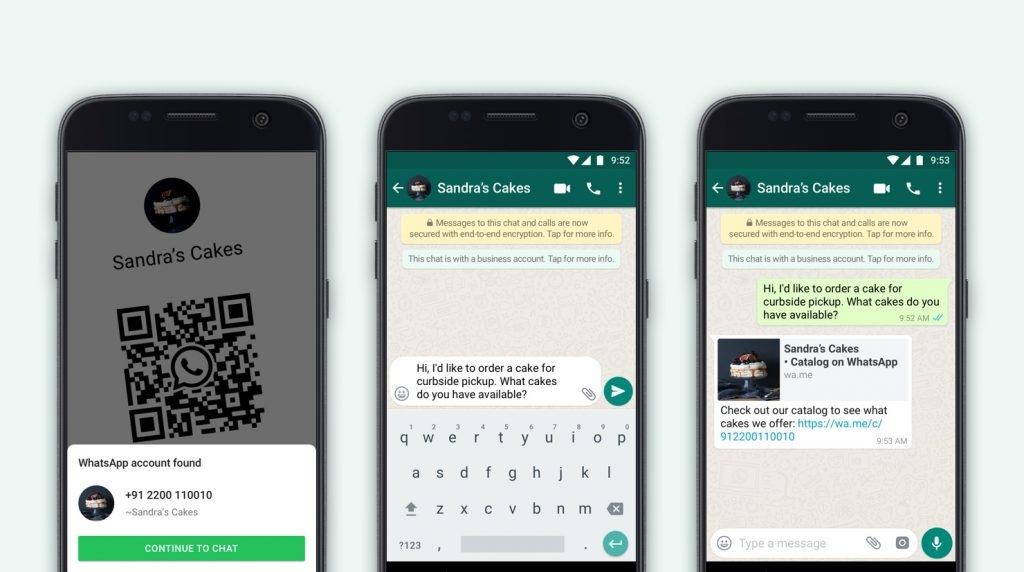
You can then even implement a WhatsApp chatbot to get the conversation started faster before your agents can take over.
WhatsApp ads are another way to guide leads directly into your WhatsApp chat. You can run WhatsApp ads on Facebook and Instagram. Once a user clicks on them, they automatically start a chat.
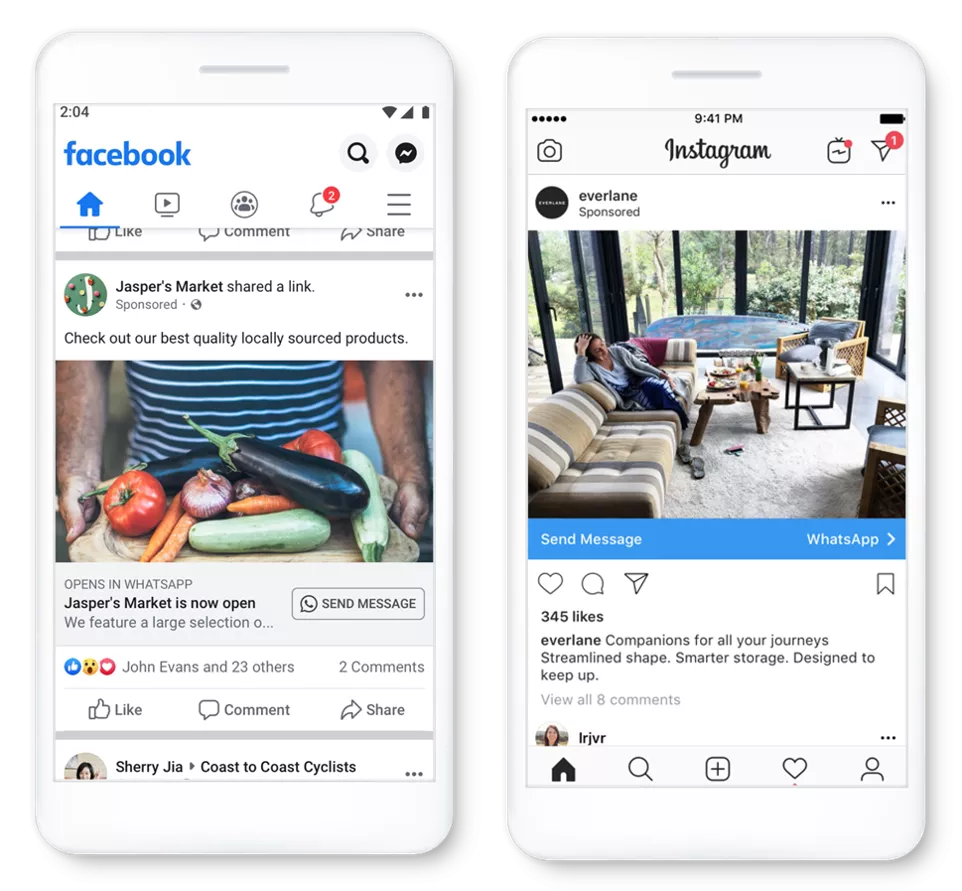
In order for businesses to do marketing on WhatsApp, they need to set up a business profile. This can either be done on the WhatsApp Business App or through the WhatsApp Business API. The latter requires you to set up a profile with the Meta Business Manager, and then verify your WhatsApp number.
On the API, you can also apply for a verified account (green tick), a feature that’s not available on the Business App. If you work with a Business Solution Provider, they can guide you through the process or apply for you.
Most companies that are serious about WhatsApp marketing use the WhatsApp Business API, as it simply offers more possibilities. In order to get access to the API, you need to work with a Business Solution Partner (an official WhatsApp partner) that offers verified and trusted WhatsApp solutions for businesses.
You can check out Meta’s partner directory for an overview.

Business Solution Providers like Sinch Engage offer you out-of-the-box messaging solutions for WhatsApp and other messaging apps that make it easy to get started with WhatsApp marketing.
On the WhatsApp Business API you have access to WhatsApp templates. These are very convenient when you want to use similar campaigns in the future because once they’re set up, you can simply re-use them.
On Sinch Engage, you can either create your own templates or use already existing ones and get started even faster.
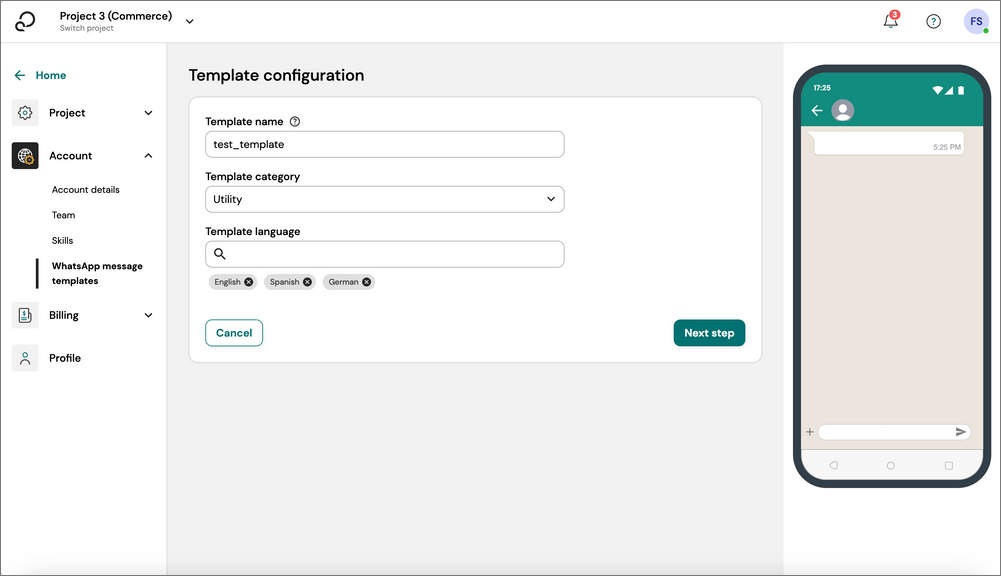
Once WhatsApp approves a template (typically within minutes), you can use it for future campaigns as well, which’ll save you time and resources.
By the way, on Sinch Engage, you can also let ChatGPT help you create content for your marketing campaigns faster.
Personalization is everything with marketing! If you use the WhatsApp Business API you can easily integrate customer management systems, and thus easily personalize your campaigns.
This can be by using the user’s names or by using their personal information to send out highly individualized messages and offers which will have better conversions.
Chatbots should be a part of your WhatsApp marketing approach. They can answer incoming questions about marketing campaigns when your agents don’t have time or are out of office.
And they’re also great for gathering opt-ins and even important data from your leads.
No matter what type of WhatsApp marketing you’re interested in, you should always establish:
That allows you to see if your campaigns are successful, where you’re missing the mark, and how you can optimize them. We also recommend starting with a smaller test audience, see first results, and scale from there to avoid high costs or mistakes.

When it comes to edible oils, Saffola is the market leader in India. It stands for pure and healthy ingredients. In order to create some buzz around a new slimming product, Saffola took to WhatsApp marketing.
Saffola set up a WhatsApp bot that users could simply contact whenever they felt the urge to eat something unhealthy. The bot would then reply with encouraging messages, and distract users from their craves with games and even songs.
With their campaign, Saffola took advantage of some unique possibilities that only WhatsApp marketing offers: interaction on the go whenever the user wants it and engaging multimedia content.
This campaign not only brought more awareness to Saffola’s new product, but since users had to sign up with their WhatsApp number, the brand also gathered many new leads (for future campaigns).
The e-commerce brand Flipkart was organizing an online sales event called “Big Billion Days”. The idea was to make people curious about it in advance, to then engage and convert a large audience.
For this, Flipkart created a WhatsApp chat that was inspired by the Kaun Banega Crorepati quiz show. The host, Amitabh Bachchan was personified by a WhatsApp bot. Fitting the quiz show theme, the entire interaction was based on fun and games. For example, users could explore products and deals through puzzles.
By leveraging the strengths of WhatsApp (interaction, multimedia formats, high engagement), Flipkart was also able to enforce a stronger bond between users and their brand.
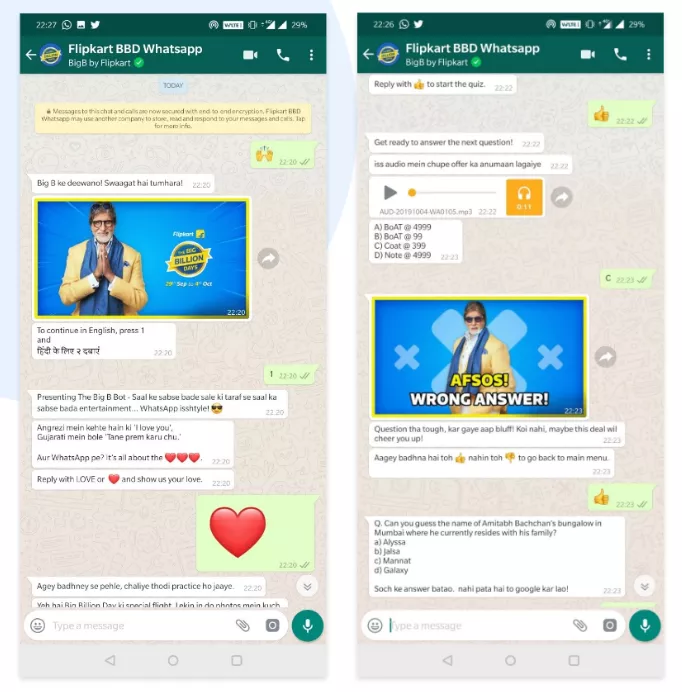
It doesn’t always have to be a big brand and large campaign. WhatsApp marketing can also be a strong tool in your everyday marketing kit. The EV company Montra Electric, for instance, integrated a WhatsApp chat in their website where users can reach out with questions.
Once they open the WhatsApp chat, they can send their inquiry, but also have the option to sign up for regular updates through WhatsApp. Before signing up, Montra asks users what type of content they’re interested in. This is a clever strategy to send personalized marketing messages on WhatsApp and ensure users receive the information they truly want.
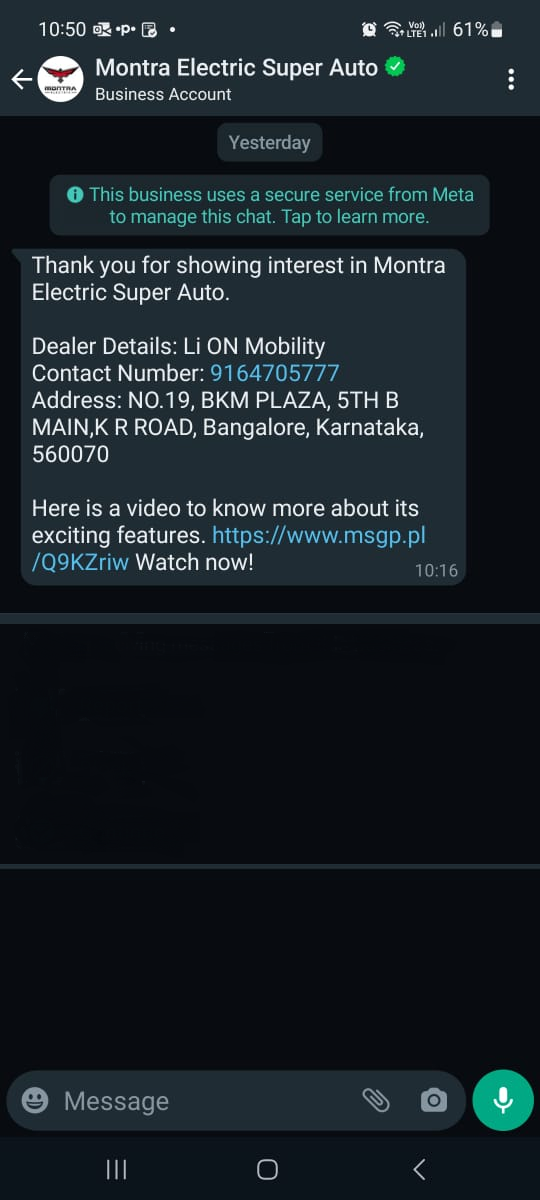
Yes! However, you have to make sure to use an official WhatsApp Business solution (the WhatsApp Business App or the WhatsApp Business API). WhatsApp mods like GB WhatsApp aren’t an official or legal WhatsApp solution and can cause data breaches, lead to spam attacks, and other issues.
Also make sure to follow WhatsApp’s guidelines and offer users opt-in and opt-out possibilities for your WhatsApp marketing messages.
You can use either one. However, keep in mind that the WhatsApp Business App offers only very limited marketing possibilities on WhatsApp (no automation, no targeting, no personalization, no tracking), and most companies end up switching to the full-fledged business solution with the WhatsApp Business API.
As long as you follow WhatsApp’s guidelines, you can send mass messages on WhatsApp without getting banned. However, if you send more than the allowed limit (a common issue with WhatsApp broadcasts on the Business App), don’t have users’ consent to send them messages, or send them content they don’t want, you risk getting banned.
When WhatsApp re-introduced their marketing messages in 2021, they wanted to make sure that users were protected from spammy content. That’s why now there are stricter guidelines in place as far as the type of content, the user consent and the amount of messages are concerned.
The good news is: if you make an effort to ask users what type of content they want, send messages they’re interested in, and with their prior consent, there are no limits to how successful and massive your marketing campaigns on WhatsApp can be.